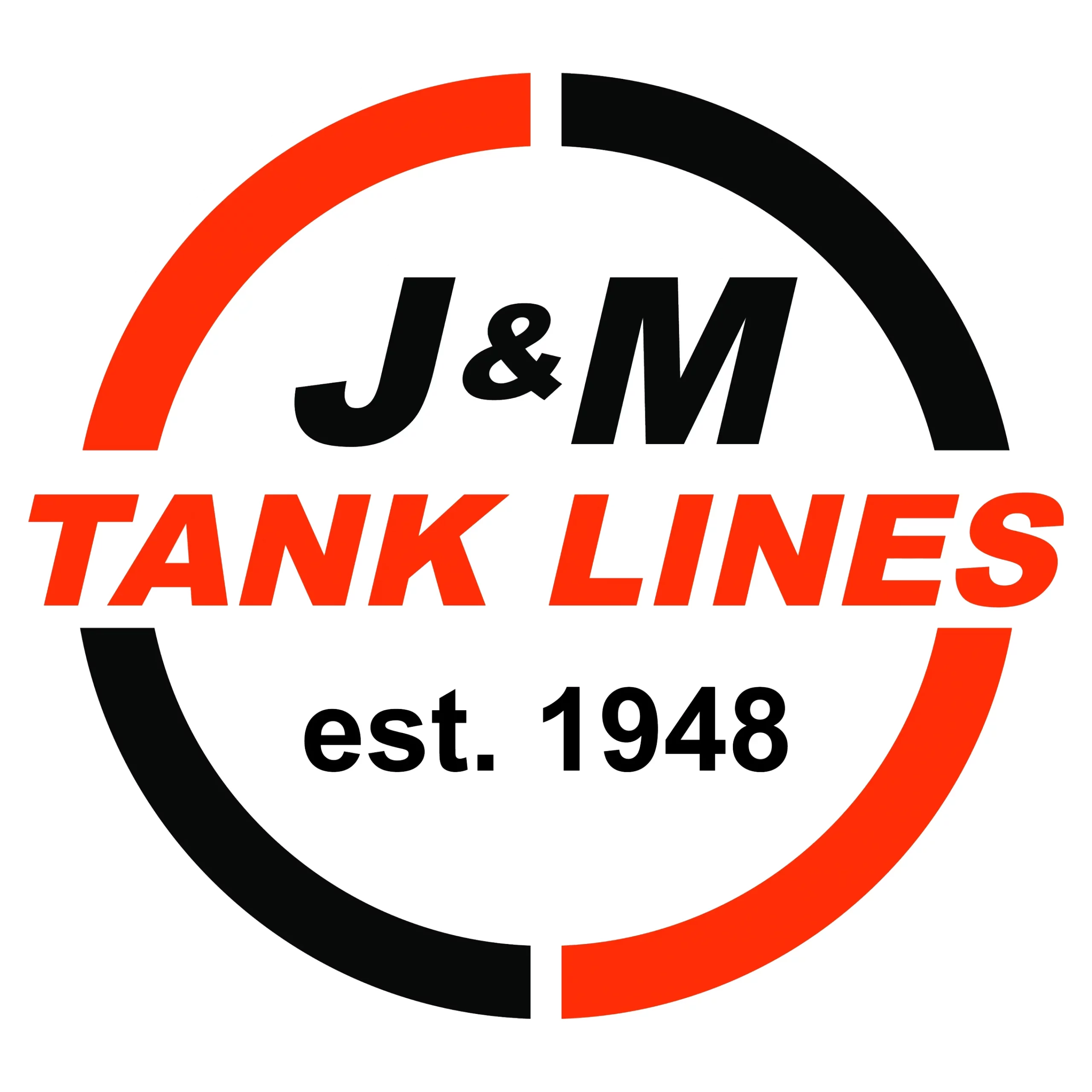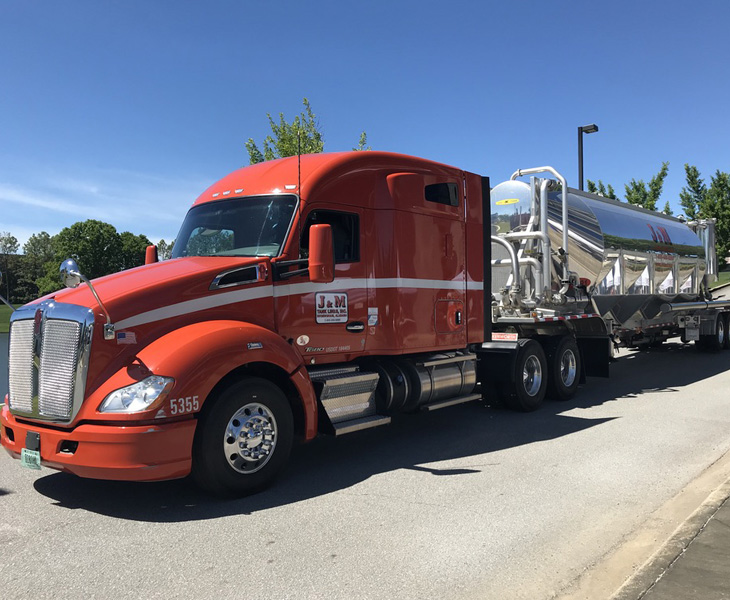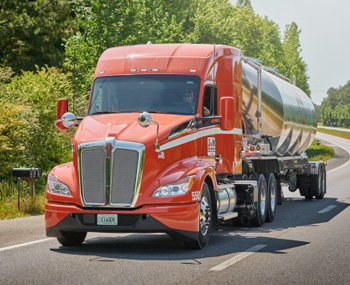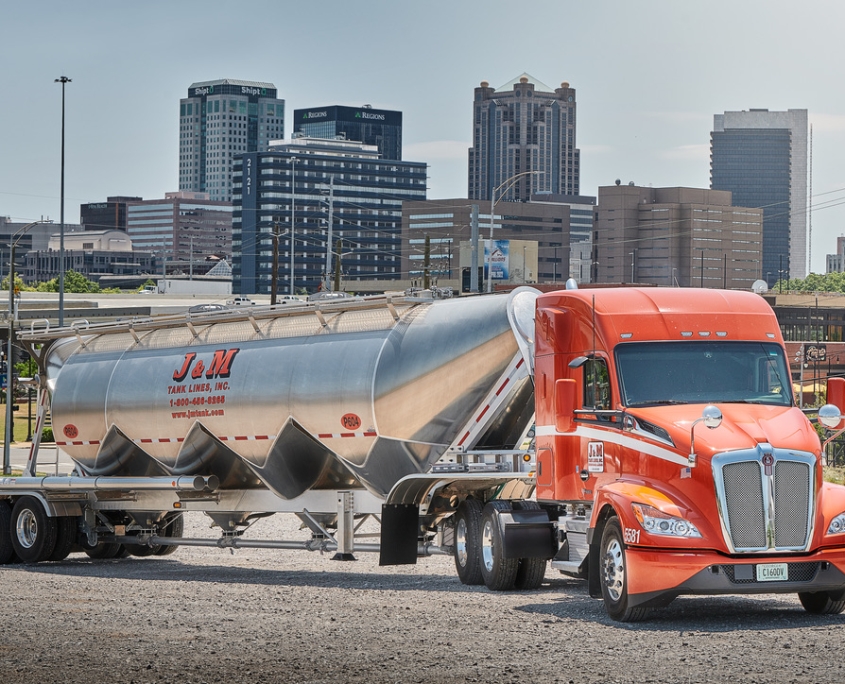
Industry
Trucking
Turnover Rate
30% Reduction
Worker Satisfaction
7.03 / 10
“When you look at the benefit vs. the cost, WorkHound is a tremendous value,” Hanson says.
“It doesn’t take much for WorkHound to pay for itself in many ways. You’re going to learn what’s motivating drivers, what their pain points are, and where you can improve.”
When Eric Hanson, Vice President of Human Resource Development at J & M Tank Lines, first heard about WorkHound while with a previous employer, he was intrigued, but didn’t think his company needed the tool. Once he moved into a new role with J & M, his perception changed.
“At a previous company, I’d talked to Max about the platform, but retention wasn’t really an issue,” Hanson says. “Then I got to J & M, and they’d been signed up for several months. Being involved with the WorkHound platform now for almost four years, my experience has been very, very positive. I now see that even in my other role where the turnover was really low, we could have benefited from having a platform like this.”
Hanson’s viewpoint on WorkHound isn’t uncommon. He’s seen up close how offering a feedback mechanism can provide drivers with an outlet to share their needs and provide companies with invaluable insight.
For J & M, partnering with WorkHound has given them another tool in the toolbox, allowing them to effectively communicate with drivers and make meaningful change. That, in turn, has made a difference in driving down turnover.



What Makes WorkHound
“Worth It”
J & M Tank Lines, which was established as a family-operated business in 1948, has long had a wide footprint across the Southeast. As an industry leader in dry-bulk transport, the company relies on a team of elite professional drivers.
In an industry plagued by turnover, though, J & M faced some familiar challenges — communication gaps between drivers and management often left those in leadership positions without the information they needed to make driver-facing change. Those drivers often left for greener pastures, rather than waiting for slow-moving action to take place.
The company worked to solve this problem with a multifaceted approach, which included using WorkHound as a communication tool. According to Hanson, that investment has paid off.
“When you look at the benefit vs. the cost, WorkHound is a tremendous value,” Hanson says. “It doesn’t take much for WorkHound to pay for itself in many ways. You’re going to learn what’s motivating drivers, what their pain points are, and where you can improve.”
Having the WorkHound platform as an additional communication tool has been especially helpful during the last several years, as the world and the industry faced the effects of the COVID-19 pandemic.
“Communication is the biggest benefit,” Hanson says. “We have other ways to communicate, but the WorkHound platform supplemented and enhanced the ways we were already communicating. It’s nice to be able to share information with drivers and ask for their feedback in multiple ways, because every person likes to communicate in a different way.”

Making Responding to
Feedback a Priority
Once drivers communicate their needs and concerns, the important part of the feedback process begins.
“The only thing worse than not surveying people is surveying them and not doing anything about what you learn,” Hanson says. “The tool itself isn’t useful unless you do something with it. To get the full benefit, you need to have the right processes in place.”
Guided by that understanding, J & M has built in processes for handling each piece of feedback that the company receives. In her role as Driver Engagement Manager, Debbie Monson is on the frontlines in ensuring driver feedback receives the attention it deserves. Her philosophy for working with WorkHound feedback is pretty simple:
“Read everything that comes in,” Monson says. “Address everything. Communicate it to who you need to communicate it to. Let the driver know that you’ve read it and that you’re addressing it.”
Once a driver submits a piece of feedback to J & M, that information is immediately shared with multiple members of the leadership team, ranging from the owners on down. The feedback doesn’t simply sit and wait to be acted upon — response is prompt and thorough.
That approach shows drivers they are truly valued, which in turn, has helped the company improve driver satisfaction overall. The numbers are pretty eye-opening:
- J & M has a 93.66% retention rate, compared to 82% average customer-wide on actionable issues. This is significant given the industry-wide average turnover is 95%.
- There have been 18 successful retention opportunities in the last 30 days alone, representing an 80% increase from this time last year.
- In total, there have been 324 successful retention opportunities.
- The company boasts a satisfaction score of 7.03.
- Over the length of the program, drivers have submitted 2,399 total comments at a rate that’s increasing year over year.
And perhaps the most eye-opening number of all? Between July and October of last year, the company saw an incredible 30% reduction in turnover.

Using Feedback as an
Impetus to Action
While it’s true that some pieces of driver feedback relate to heavy issues like pay and benefits, many of the concerns drivers have relate to smaller, more specific problems they face in their daily routines.
Having a tool like WorkHound allows drivers an opportunity to quickly and easily share their frustrations, which gives leadership a pulse on problems they might not otherwise be aware of. Take, for example, a recent situation J & M resolved:
“There was a glitch in the pre-trips/post-trips,” Monson says. “Our trucks were assigned to one terminal, but were actually being run out of another terminal. Drivers would do their pre-trip or post-trip and look for something to be fixed, but the mechanics were not always catching it because it was going to a different terminal. So we got that corrected once the drivers brought it to our attention.”
While problems like that one often surface and are resolved, WorkHound also helps J & M spot the positives — and call them out.
“I use WorkHound not only to address the negative, but also the positive,” Monson says.
“When something comes in that’s very positive, we shoot it out to everyone involved. We had a driver recently who got 100% on his roadside inspection, and you get a bonus for that. At the bottom of his inspection, he wrote a thank you to the maintenance team. He also called Safety and said, ‘Instead of giving me that bonus, would you please buy lunch for the shop, because I couldn’t have gotten that without them?’ We all celebrated that. It brought the whole company together for a good cause. Celebrating the positives can be more impactful than simply sharing good news.”

“If I was starting a trucking company today, I’d have WorkHound on board,” Hanson adds. “If you aren’t using it, you’re missing the boat. You’re missing an opportunity. For the value you get, it’s a no-brainer.”
Let's Build Better Workplaces Together
Revolutionize your company culture and your worker retention rates by improving communication and engagement.
Book a Demo